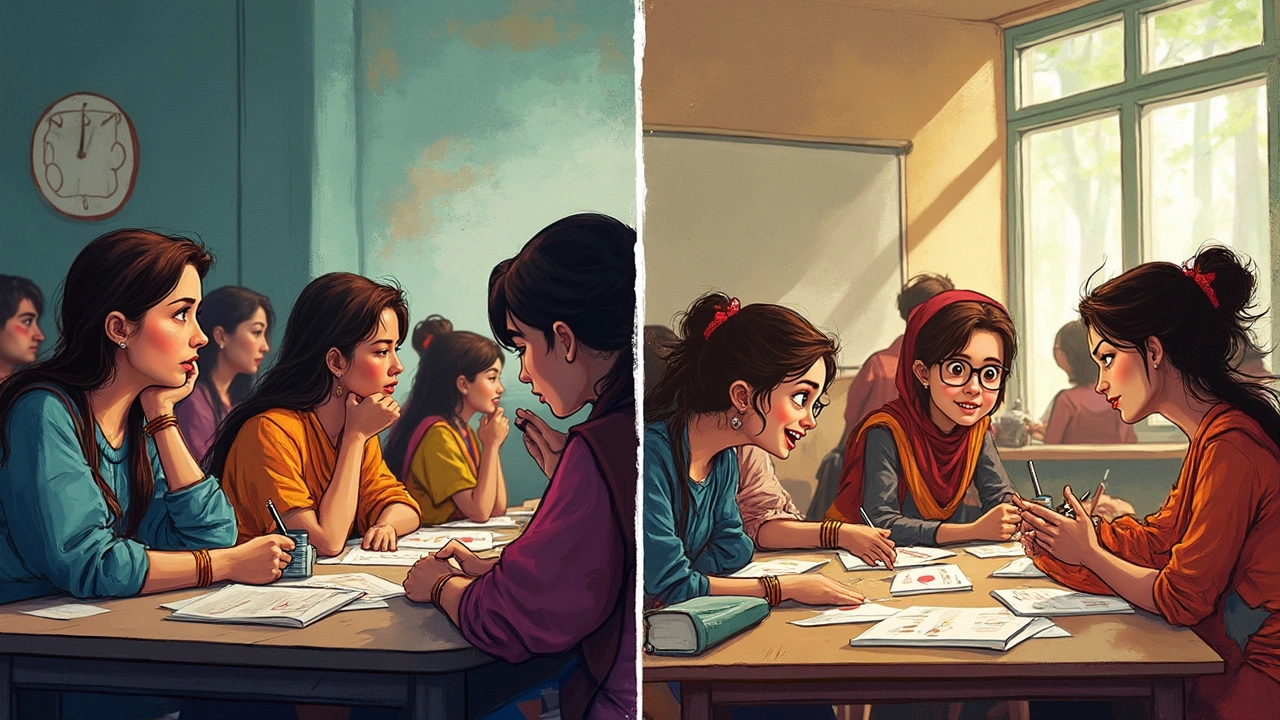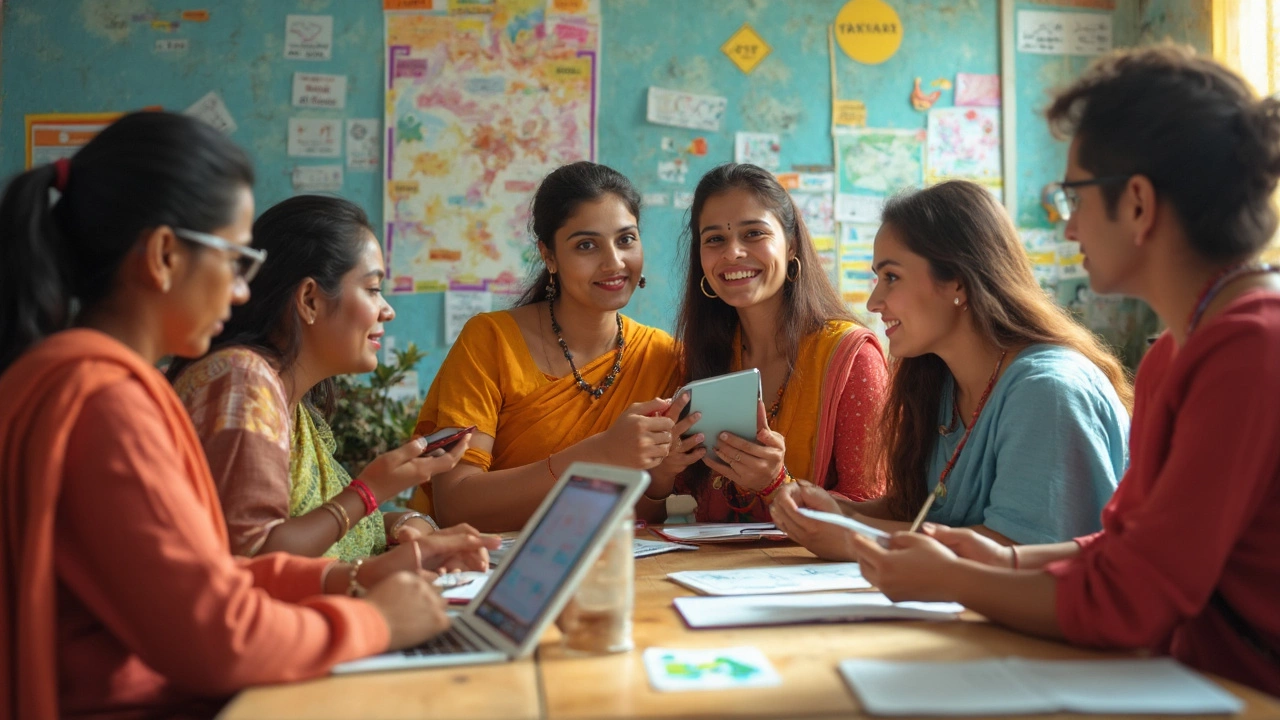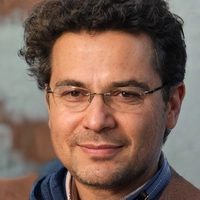Boring PowerPoints, endless paperwork, and a coffee that's gone cold—sound like your last teacher training? You’re not alone. A lot of training promises big improvements, but only some actually help you tackle real classroom chaos.
Here’s a fact: teachers who get consistent, practical coaching see their students improve more than those stuck in old-school, theory-heavy courses. In 2023, a UK study found that teachers trained with ‘real-time feedback’ felt twice as confident handling tough student behavior.
So, what's the secret sauce? It’s less about theory, more about showing, doing, and tweaking as you go. If you’re here to find training that actually sticks, you’re in the right place. Let’s make sure your next session isn’t just another nap in a jacket.
- What Do Teachers Really Need?
- Traditional vs. Modern Training: What Works?
- Social Learning: The Hidden Power Move
- Tips for Choosing Effective Training
What Do Teachers Really Need?
It's easy to assume that teacher training works like school itself—learn the theory, pass a quiz, and you're good to go. But that's not how it plays out in the real world. Teachers face wild classrooms, different learning styles, tech hiccups, and pressure to get results fast. What really makes a difference?
- Practical strategies: Teachers need ways to handle real-life situations, like calming a rowdy group or explaining a tough concept using everyday examples. For example, instead of just hearing about classroom management, teachers want specific scripts they can try the very next day.
- Time-saving tips: Nobody has hours to burn on paperwork. The best teacher professional development shows you shortcuts for lesson planning, grading, and even managing parents’ emails.
- Real feedback: Ever left a workshop wondering, "Did I even do that right?" Teachers say that feedback from peers or mentors—right after they try something new—helps the change stick. In a 2022 national survey, 68% of teachers picked this as their #1 need.
- Support for new tech: Schools love rolling out fresh gadgets, but there’s rarely time to learn them well. Hands-on tech training saves hours of future headaches.
For teachers starting out, a bit of everything helps—classroom routines, communication tricks, tech basics, and even tips for staying sane during tough weeks. For experienced teachers, training that's too basic just wastes time. They want deep dives: how to coach other teachers, handle advanced student needs, and cut out stuff that doesn’t work.
Here’s a quick look at what teachers say matters most in practical teacher training:
| Top Need | % of Teachers Citing It |
|---|---|
| Practical Examples | 75% |
| Peer Collaboration | 60% |
| Immediate Feedback | 68% |
| Tech Help | 55% |
Long story short: teachers want training that’s quick, hands-on, realistic, and proven to help in the classroom. If it doesn’t make the next Monday easier, they’re probably skipping it next time.
Traditional vs. Modern Training: What Works?
Back in the day, teacher training meant sitting in a lecture hall, copying notes, and getting bombarded with educational theory. You walked out with a stack of handouts—maybe a certificate—but not much you could actually use the next day with your class.
Modern training has totally flipped the script. Now, sessions focus on hands-on practice, one-on-one coaching, and tech tools you can try right away. Forget the never-ending lectures. Instead, you get to watch a quick demo, test out a technique, and get feedback on the spot. Research from 2022 in Finland showed that teachers who practiced in realistic classrooms—not just listened to lectures—were 60% more likely to remember and apply new strategies after three months.
Here’s a quick side-by-side to make things clearer:
| Traditional Training | Modern Training |
|---|---|
| Theory-heavy lectures | Hands-on practice |
| Notes and paperwork | Real classroom simulations |
| Passive learning | Active participation |
| Rare feedback | Regular feedback and coaching |
Want a training session that actually makes your job easier? Look for these features in best training for teachers:
- Role-playing real classroom situations
- Video recordings of your teaching (so you can see what works and what doesn’t)
- Instant feedback from an experienced coach
- Apps and tech tools made for teachers, not just managers
It’s not just about learning something new. It’s about practicing, seeing results, and actually enjoying the experience. Practical teacher training makes a visible difference for both teachers and their students. Forget the theory marathons—go for training that gets you moving and makes you better at what you actually do all day.

Social Learning: The Hidden Power Move
There’s a reason teachers always compare notes in the staff room—learning from others is a fast track to real progress. Teacher training that builds in social learning isn’t just a trend; it’s how adults pick up new skills best. Forget solo study or just listening to a lecture—when you actually work with other teachers, your brain locks it in. The Education Endowment Foundation in the UK found that teachers using peer observation and feedback systems had a 20% higher chance of trying out new classroom strategies than those going it alone.
Social learning can show up in all kinds of ways:
- Peer observation: Watching your colleague teach in real time or through video, then swapping honest tips.
- Team lesson planning: Bouncing ideas around instead of struggling solo helps everyone find fresh approaches.
- Online teacher groups: Places like Twitter’s #edchat or school Slack channels for quick crowdsourced solutions.
- Coaching cycles: Pairing up with another teacher or mentor for step-by-step feedback and check-ins.
This kind of teacher professional development delivers what boring workshops don’t—immediate, helpful feedback. Teachers say it saves time and stress because you can skip what doesn’t work and focus on tested fixes straight away. Plus, being part of a group keeps you motivated to actually follow through, which is where most one-off seminars fall short.
Here’s some real-world data to back it up:
| Type of Training | Skill Retention After 6 Months |
|---|---|
| Solo Workshop | 30% |
| Ongoing Social Learning | 65% |
That jump isn’t by accident. The more you interact, reflect, and get feedback with other teachers, the more you actually remember—and use—what you’ve learned. So, if you’re looking for practical teacher training, make sure ‘social’ is on your must-have list.
Tips for Choosing Effective Training
If you want to get something real out of your next teacher training, you have to be picky. Not all programs will help you. Here’s how to separate the life-changers from the time-wasters.
- Look for hands-on practice. The best training for teachers involves more than just listening. Go for workshops that let you try out new skills right away—think role-playing, classroom simulations, or peer feedback sessions. In a 2022 US survey, 75% of teachers said they remembered more from trainings where they “did” rather than just watched.
- Prioritize real classroom scenarios. Theoretical stuff might sound clever but doesn’t always help when your lesson goes sideways. Choose training packed with everyday examples, quick fixes, and concrete advice. If the course throws in a chance to watch real classrooms or share your own stories, that’s gold.
- Ask about follow-up support. Great teacher professional development doesn’t stop after one session. Does the training offer follow-up coaching, online check-ins, or peer groups? Regular feedback doubles your chances of making a change stick, according to a 2023 Harvard study—a little accountability goes a long way.
- Check who's teaching you. It sounds obvious, but it matters. Trainers with recent classroom experience tend to know what actually works. Teachers ranked “guidance from peers” as more useful than advice from consultants, in a Pearson report last year.
- Measure success, not attendance. A thick certificate can look nice, but real results are what count. Ask if the program tracks changes in your teaching or student outcomes. If there’s no real way to measure impact, move on.
Here's a quick look at what actually makes a difference, based on research from the Education Endowment Foundation:
| Feature | Boosts Student Results |
|---|---|
| Practical Coaching & Feedback | Yes, by up to 15% |
| Theory-Heavy, No Practice | No Effect |
| Peer Collaboration | Improves Confidence & Skill |
| One-off Workshops | Short-term, Little Lasting Impact |
When in doubt, ask around. Trusted colleagues can point you toward practical teacher training that actually helps—and warn you about the duds. Don’t settle for anything less than training that pushes you and supports you where it matters: right in your classroom.

